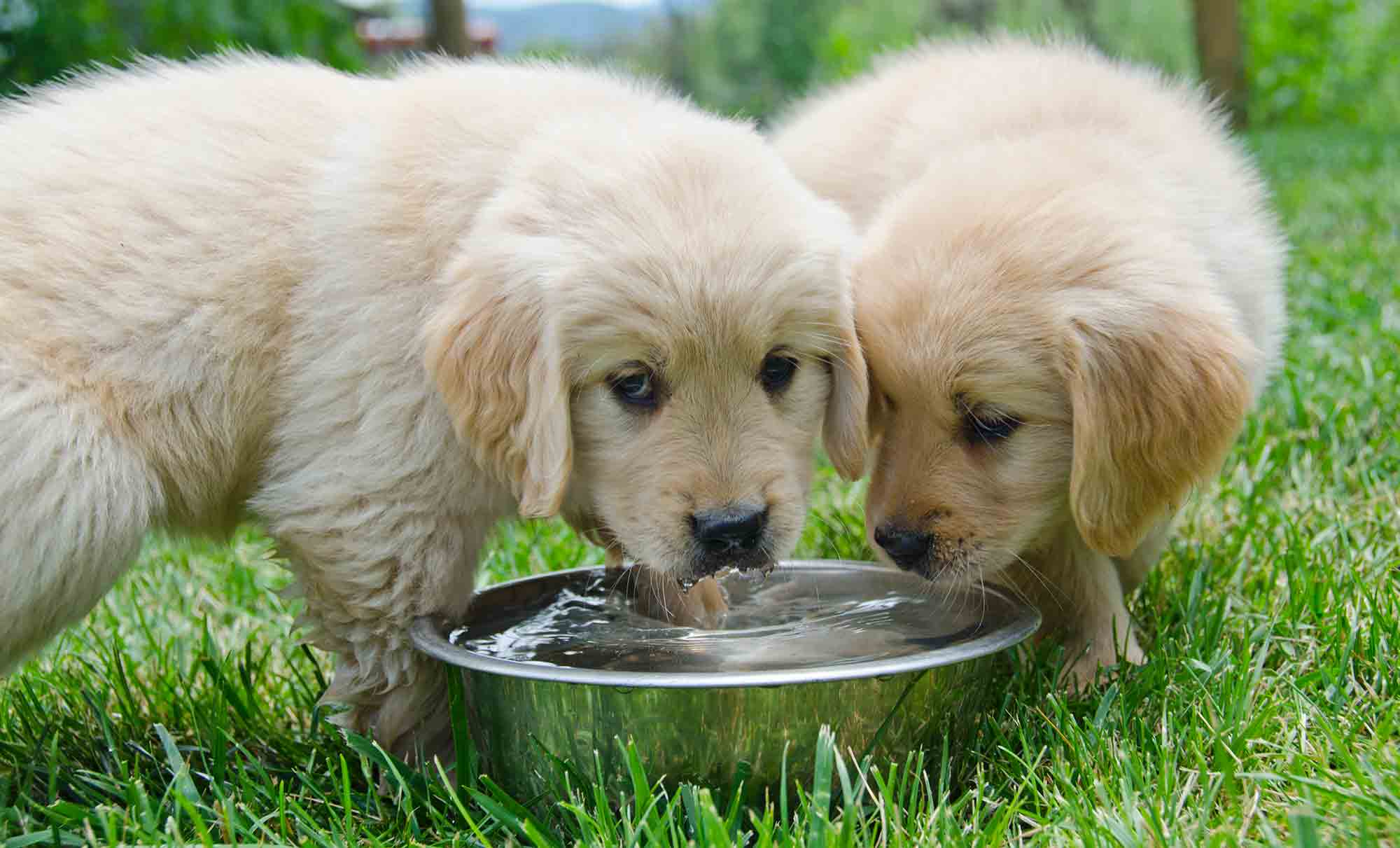Should my Pet Drink More Water? The Signs of Dehydration in Pets
 When the sun is blazing and the temps are rising, you may definitely feel the urge for a glass of ice cold water (or other beverage). In fact, you may notice everyone going through the office water bottles at a faster rate. But how often do we pause to notice how thirsty our pets are or how much water they’re consuming in a given day?
When the sun is blazing and the temps are rising, you may definitely feel the urge for a glass of ice cold water (or other beverage). In fact, you may notice everyone going through the office water bottles at a faster rate. But how often do we pause to notice how thirsty our pets are or how much water they’re consuming in a given day?
Although we just assume pets will drink when they need to, many pets actually don’t get enough water. Especially during the summer months, it’s easy for Fido to become dehydrated at a much faster rate than you.
Dehydration in pets can be a very serious problem, so take the time to learn more about the symptoms and what you can do to encourage your pet to drink more water this summer (and any time of year).
How to Recognize Dehydration in Pets
Dehydration can occur when fluid intake is not sufficient for the loss of fluid (in your pet’s case, through the lungs, paws, and nose or because of illnesses that cause diarrhea or vomiting). Dehydration disrupts the flow of blood and oxygen, as well as nutrients, to the organs of the body, thereby causing damage and eventually, if untreated, leading to death.
Dehydration can occur rapidly in pets and can be subtle. Unlike us, they can’t communicate their distress, which makes it all the more important to recognize initial signs:
- Sluggishness or lethargy
- Decreased urination
- Panting
- Sunken eyes
- Dry mouth (pale, tacky gums)
- Lack of skin elasticity (if you gently pull the loose skin at the back of the neck, it doesn’t “snap back” quickly)
- Disinterest in food or water
Some illnesses can make pets more prone to dehydration, including cancer, kidney disease, and diabetes. Treating a pet who’s vomiting or experiencing bouts of diarrhea is also important, since this can lead to dehydration.
Because dehydration is a critical health issue, it should be considered a possible emergency. Please phone us right away if your pet is displaying any of the aforementioned signs. While IV fluid therapy is often required to quickly and safely rehydrate your pet, we can help you determine what actions need to be taken.
How to Prevent Dehydration
One way to know whether your pet is getting enough water is to monitor how much water you put into the bowl. Consider purchasing a pre-marked bowl or adding measurements on the outside of a clear glass bowl. Dogs typically require one ounce of water per their body weight every 24 hours. Cats typically need 2-4 ounces daily, in addition to food (more if they are on a dry food diet).
Other ways you can prevent dehydration include:
- Avoid going outside with your pet during the warmest time of day. Take frequent shade breaks when you do venture out.
- Whether on a car trip, hike, or walk, always carry extra water and a collapsible bowl.
- Encourage pets to drink more water through the use of a water fountain type bowl or by adding ice cubes (which many dogs love).
- Encourage cats to drink by adding a bit of tuna water or low sodium chicken broth to their bowl.
- Keep indoor temperatures at a comfortable climate, even when you’re not at home.
- Pay close attention to pets who dehydrate more easily, such as brachycephalic pets, seniors, and those will health issues.
For more tips on how to avoid dehydration in pets this summer, please give us a call!
